Dump trucks hauling rocks from nearby quarries roar along the sections of Highway 8 that are still passable. Helicopters transporting repair crews cut across the sky and down into the Nicola River valley. Along what remains of the riverbanks, teams of workers in fluorescent jackets gather wire, broken fence posts and other pieces of debris.
These were the sights and sounds of the massive repair operation underway on the territory of the Scw'exmx, meaning People of the Creeks. Here, catastrophic flooding, driven by the impacts of the climate emergency and excessive logging, washed away bridges and homes, uprooted trees, erased parts of the highway and displaced community members last November.
The floods were the result of an atmospheric river that poured a month’s worth of rain in the space of two days. It came only a few months after a wildfire destroyed the nearby village of Lytton amid record-breaking heat, another sign of a warming planet caused by the burning of fossil fuels.
The fire spread into the valley, resulting in the emergency evacuation of the Scw'exmx, who are a branch of the Nlaka'pamux people, for several days. Blackened trees, no longer able to retain much of the rainwater that caused the river to rise last fall, pepper much of the west side of the valley.
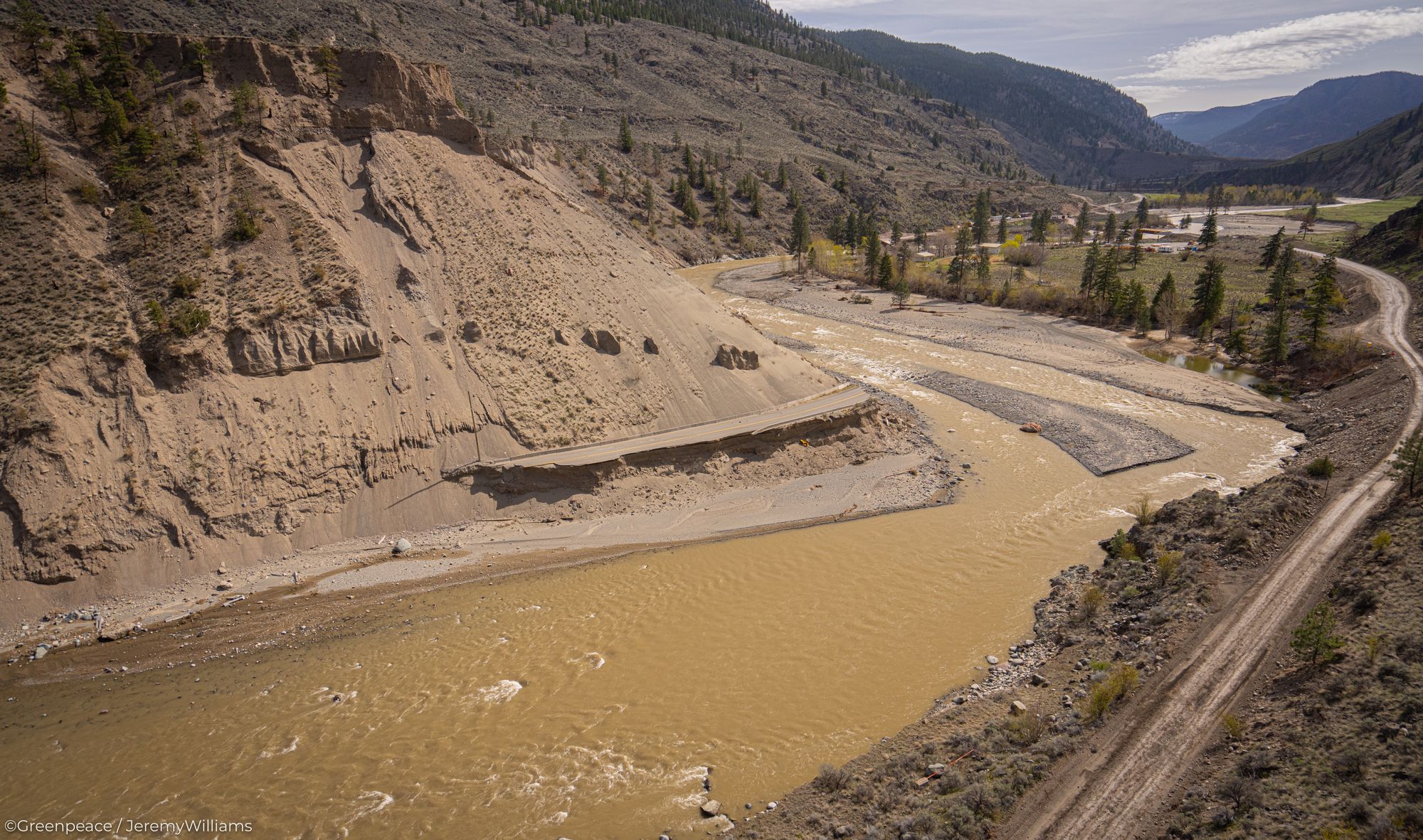
Chief Arnie Lampreau of the Shackan First Nation, which is part of the Scw'exmx, is among those who are still waiting to return home after the floods. He and his wife Lenora Starr, as well as others, have been staying at a local Trans Mountain pipeline work camp in Merritt.
“We thought we were only going to be out for a couple of days,” said Chief Lampreau. “In reality, that couple of days has now been 140. It's kind of a real life changer.” Most others on the north side of the community have been returning home since mid-February.
The Chief Anthony Joe Bridge, which connected Chief Lampreau’s home to the highway, was among the structures washed away by the flood. What remains of it currently lies stranded on the riverbed.

“This whole year has actually been a traumatic thing,” Chief Lampreau explained. He noted that before the floods and fires, the community had to deal with deaths caused by COVID-19 and the trauma experienced after the unmarked graves of 215 children were located at the former site of the Kamloops Indian Residential School in May 2021.
Meanwhile, the threat of further damage to the land hasn’t gone away. “We're still losing land, even to today,” said Chief Lampreau, who noted that the spring rains will likely cause the river to rise again. The logs and debris strewn across the riverbed could become “battering rams” when that happens.
A key priority for Chief Lampreau is reclaiming more land for his community, both for its safety and long-term prosperity.
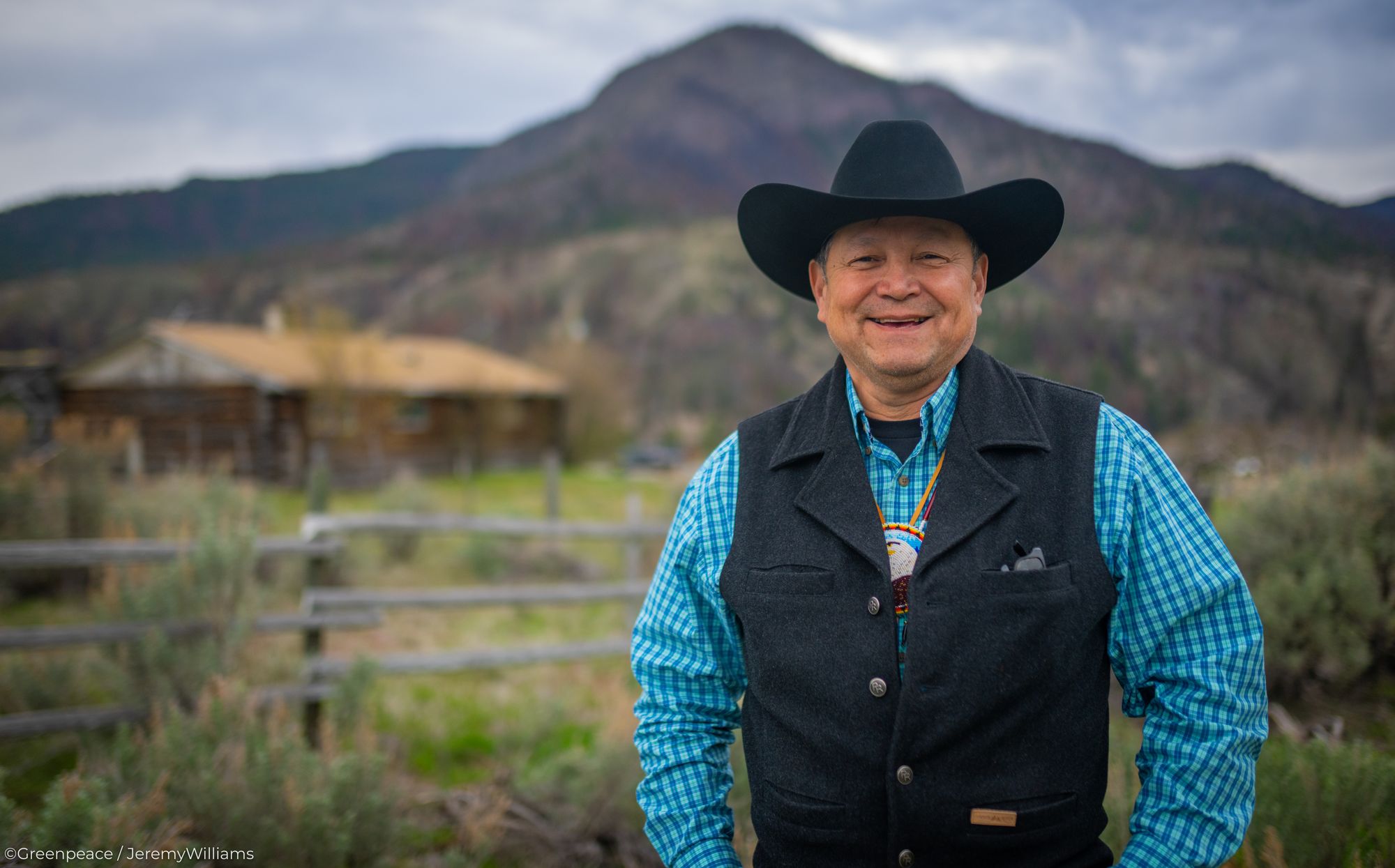
Currently, Shackan is divided into three separate reserves. The main reserve encompasses a portion of Highway 8 and is largely situated on the west side of the Nicola River. The other two reserves, Papsilqua and Soldatquo, are located to the north-east of the river.
“I'm looking at lands that are closer to Merritt,” Chief Lampreau explained, “and the reason for that is to provide economic diversity, because we don't currently have that down here where we're at.”
“What I'm looking at is the next seven generations down the road not having to worry about being flooded out or put into a position where there's fires, so they have a better chance of thriving and surviving.”
The land, people and local wildlife are at risk, Chief Lampreau continued, as erratic weather events become more common. As well, extreme weather further drives ecological destruction in no small part because the excessive harvesting of traditional lands means that much less rainwater falling into the valley is being retained by what were once healthy forests.
“Without our water, we're nothing. Without the land, we're nothing,” Chief Lampreau noted.
“You can even look at Google Earth, and you see how much is missing, and all the square patches of forest that are gone.”
Reflecting on the dramatic changes the Scw'exmx have faced to their land and culture over the years, Chief Lampreau said: “What it boils down to is the government: How are they going to make the money, and how are they going to spend it? But is it really beneficial to our people? I don't know, that's something we have to talk about.”
At the root of many of the challenges faced by the Scw'exmx and other Indigenous Peoples, said Chief Lampreau, is the “doctrine of discovery,” the colonial legal concept used to justify stealing land from Indigenous Peoples.
“The doctrines have never been renounced. It remains the basis of Canadian law and influences the way our people are treated. We were a government, we were a people, we had a custom, we had our own laws, we had everything prior to contact,” said Chief Lampreau.
“It needs to go to a level where we can renounce these doctrines that they use to beat us down to literally nothing.”
“I think our ancestors are actually helping us to get this process done quicker."
The scale of the repair work underway throughout the valley includes everything from reinforcing the river bank with heavy rocks and mending the highway to clearing out and replacing damaged home appliances, including thawed freezers.

While the B.C. Ministry of Transport and Infrastructure is undertaking many of the repairs, Shackan band members and other Nlaka'pamux relatives have been on the ground doing much of the legwork.
“I don't think that the staff had any idea of how much work that they had to do to get the people back into Shackan,” said Chief Lampreau.
He explained that to initially access the homes in the valley, Shackan members had to make several two-and-a-half-hour long trips each way via the mountains, since the highway was closed.
Cleaning out spoiling food from the freezers was difficult for the Shackan crews, who knew how much work had gone into gathering winter stores of fish and game that were rendered inedible as a result of power outages.
A particularly traumatic aspect of the recovery process has been locating and protecting ancestral remains that were unearthed by the high waters. At a rock quarry, one ancestral finding included parts of a human skull with seven arrowheads around it.
Scw'exmx archaeological monitors are working in the field to identify the remains along with animal bones. Among those workers is Shackan member Shona Bara.
“We're just trying to make sure that we can find them and bring them back home safe and sound,” she explained.

Once the bones are found, Bara said, the archaeological monitors provide a tobacco offering to let the ancestors and animals know that the monitors are here to help. “We just say a prayer over them,” she said.
Chief Lampreau believes it’s no coincidence that ancestors are being found at the same time his community is looking to reclaim more of its land. “I think our ancestors are actually helping us to get this process done quicker,” he said.
"I thought I was going to die"
Spe’?eci’, an nlekpmx elder and knowledge keeper whose English name is Amelia Washington, was woken up by a terrifying sound on the night of Nov. 15.
That evening, the power went out at 5 p.m as the river rapidly rose. Washington’s family, including her 82-year-old sister, a stroke survivor, had prepared to evacuate first thing the next morning.
“It must have been 10 o'clock, maybe 9:30. The house cracked, and it felt like it dragged,” said Washington. “It scared the living daylights out of me. I really thought I was going to collapse in the house. I thought I was going to die in there.”
The water had completely eroded approximately 50 feet of land, including some directly beneath her house.
Washington frantically woke up her sister, and eventually everyone escaped. Washington initially didn’t want to leave the property, as she had only recently returned after being evacuated because of the fires.
Eventually, however, it was too dangerous to stay, and they all left.
Washington’s home is situated next to an area where many ancestors are buried. Her home also sits at the foot of a hill, which once served as a puberty training ground for Scw’exmx youth.
“The young girls used to do their isolation huts back in my grandmother's day,” Washington explained. Her grandmother told her that back then, pits were dug and young women would bleed into the land.
For the boys, the hill was the site of an endurance run, where they had to pack rocks from the river up the mountain, and beat the sunrise each day.
“Wherever the sun stopped, that's where they'd have to stay, and then come down, bring that rock down and then go back up again,” said Washington.
“This is a very sacred area.”
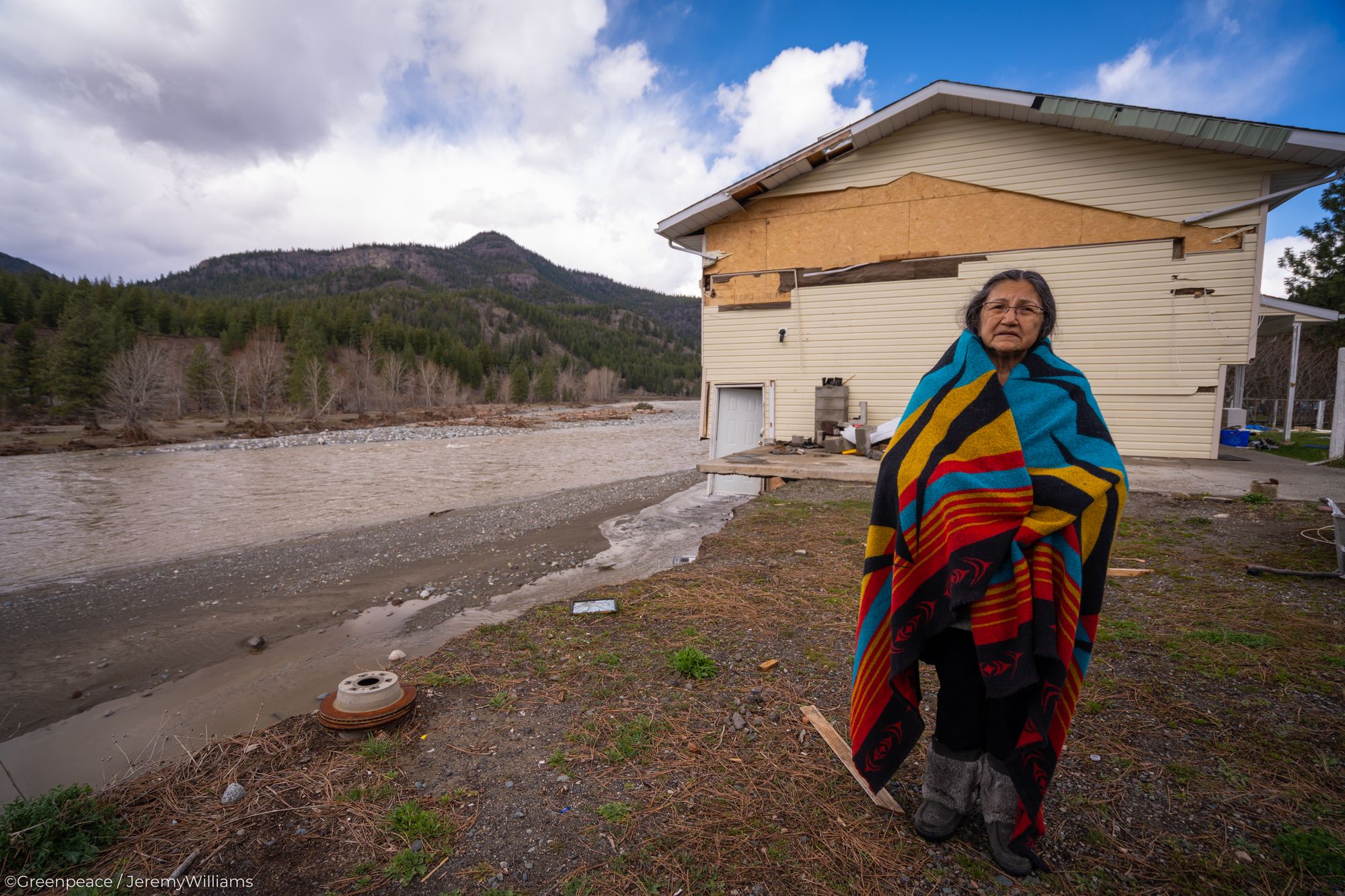
Her mother gave her this land, and another piece of land nearby to Washington’s nephew so they could live close together. Washington had lived in Williams Lake for 10 years, but her mother told her it was time to come home.
“You need to start teaching the young, the puberty rights and all the ceremonial things,” Washington recalled her mother saying. “You’re needed here.”
Now, Washington’s house, first built in 1988, hangs over the riverbank, too dangerous to enter. “We're not allowed to go in there to retrieve anything, just for safety purposes,” she explained.
“It really saddens me because I was a single parent when I returned, and I paid for this house on my own. I raised my children here.”
Washington’s cultural regalia, beaded belts and an eagle-feathered staff, all deeply important items for her traditional practices, were stolen from the property following the evacuation. She hopes they will be returned in good condition.
Washington also hosted sweats on her land. She had a shed and five cords of wood that were washed away by the river; she also lost lava rocks, sweat rocks, all her pails and a metal tub, all materials needed for the sweat lodge.
“I do want to rebuild, because I'm called upon as an elder to help the females and usually get my nephew to run the male sweat,” she said.
The night of the flooding was traumatic. “I couldn't have anybody come close to me and give me a hug without crying,” Washington explained. After she made it to safety, she was unable to make contact with her son for 11 days.
“I didn't know where my son was,” she said. “I didn't know if he was alive, if he went down with the house, if he went back in the house and the house collapsed. I was so fearful.” Thankfully, her son was safe.
In the immediate aftermath, her family, who had only a few items of clothing to their name, were given shelter by a grandmother from the Lower Nicola Band whose grandchild Washington had helped through puberty.
Eventually, however, members of Washington’s family were placed in separate hotel rooms, unable to eat and sleep under the same roof.
This was difficult for Washington, a language and tradition holder whose role is to pass knowledge down to the younger generations in her family. “That's why I really wanted to be together,” she said.
Meanwhile, Washington’s sister’s support services were cut off because of the floods, and they had to negotiate with the Lower Nicola Band for help with bathing and transport to doctor appointments. The band was very helpful, Washington said.
“I'm really thankful that another neighbouring band stepped up and helped us,” she explained. Chief Lampreau, Washington continued, also stepped forward and offered support for anything she needed amid extremely difficult circumstances.

Washington has been an advisor to the land, and sees how clear-cut logging in the area has directly impacted her home.
“I know that there is an effort to hear from us as elders, but I think they pretend to walk beside us, but they veer off and do whatever themselves, so they're not being very honest about their approaches to the land,” she explained.
“What I keep hearing from elders is that our children have spoken, the residential school children have spoken, they have shown themselves and allowed themselves to be discovered,” Washington continued. “Now, with the water, our ancestors are allowing themselves to be discovered to wake us up and pay attention to the sacred land and the water.”
“We need to get back to our tradition, our ceremonies, our languages and our culture, because we've lost a lot of that.”
Ko’waintco Michel, who represents the Nla’kapamux Nation at the Interior Region Nation Executive Table, will gather Washington and her family at what remains of the house to give thanks and to call themselves out of the building through a ceremony.
They will also talk to the spirit of the house, Washington explained. “I know I have a spirit protector in this house,” she said. “So we need to let that spirit know that they can go now, [and say] thank you for protecting us, because I'm pretty sure that spirit will be wondering, where are we?”
“If we do go, at least we go together.”
Kim Cardinal moved to Spences Bridge, downstream from Washington, with her husband Lorne from Chilliwack two years ago to start a hobby farm. Kim said she and her husband wanted to show their grandchildren a different way of life.
“I'd say ‘it's time to go home,’ and they were like ‘no, grandma, we need to get the eggs tomorrow,’” Kim recalled.
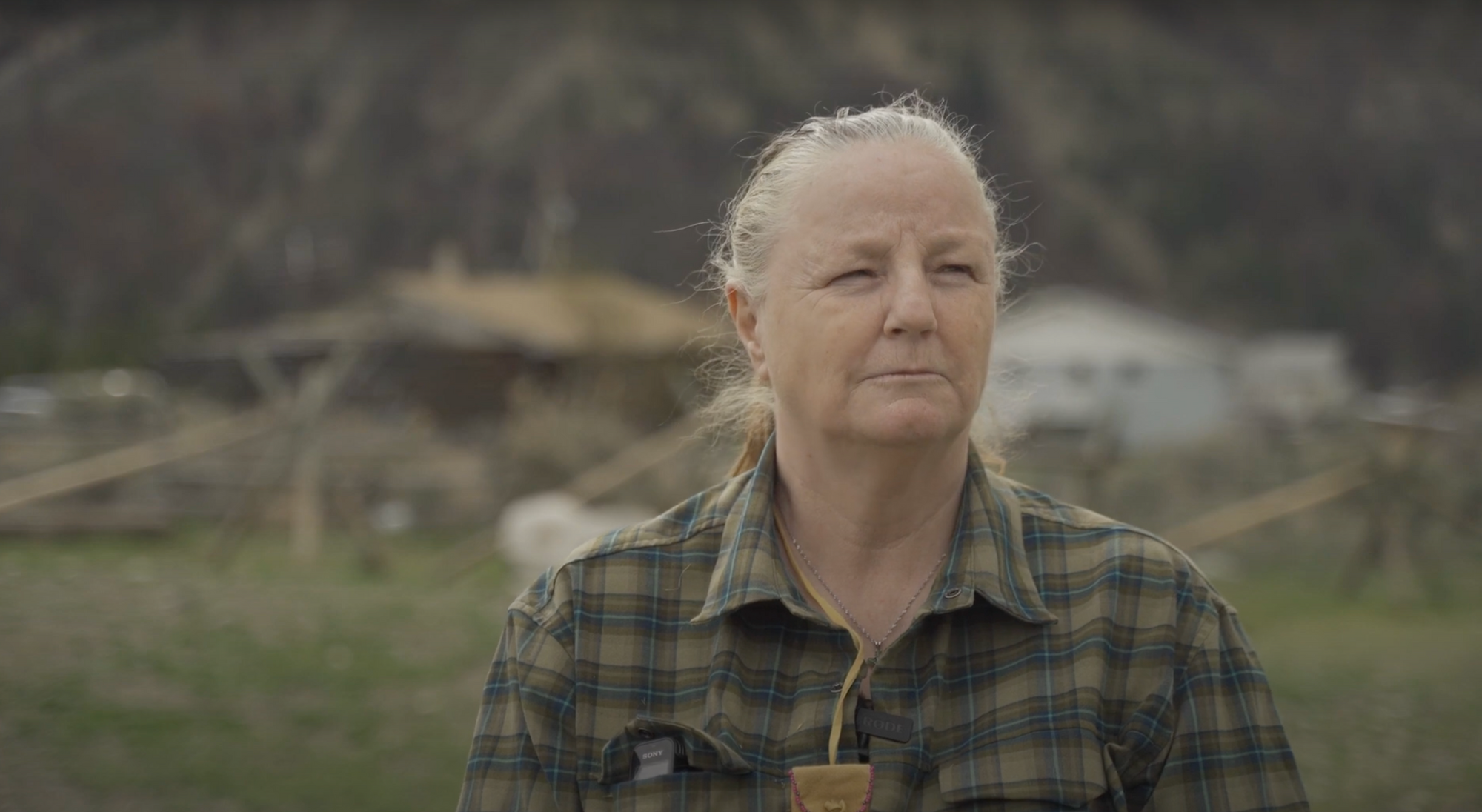
When the waters first started rising the night of the flood, she was not too concerned. After all, the man who sold them the property, a resident of the valley for 45 years, said the river had never breached the bank beside the farm.
But the waters soon surrounded the house. Realizing they needed to get their animals to safety, Kim had Lorne drive their trailer down the driveway, and Kim went back and forth with their dogs. But the water rose quickly, becoming too dangerous for her to continue.
“My husband got the old farm truck at the very far end of our property,” she said. “He drove it and floated, and then it would hit the land. And then he grabbed the rest of the house dogs.”
Cut off from the highway, they parked the trailer at the top of their driveway where they thought they would be safe. Out of the darkness, an off-duty RCMP officer who watched the road collapse in front of him arrived in a truck and took shelter on the Cardinals’ driveway.
Twenty minutes later, Kim had a strange feeling. She went outside, and in the darkness could see her horse, Winter, dancing and stomping.
“Then I noticed that half our land was gone,” said Kim. “All my peacocks, and chickens, ducks, everything, were gone. So I went running and I banged on the trailer yelling at my husband for help.”
The couple quickly got their three horses out of harm’s way. But then “our whole driveway, the shop, the barn, everything, just dropped,” she said. Then the house began screeching as nails twisted and glass shattered, before collapsing into the river.
The last thing that left the property was the Cardinals’ 36-foot motorhome that floated down the river. “All our land was gone,” said Cardinal.
All of this happened within the space of approximately one hour.
Over the course of the evening, the Cardinals had to move their trailer up the driveway and drag their horses to safety three times as the road continued to dissolve.
“At one point in the trailer I started crying and I said to my husband, ‘I don't want to die. I want to see my grandkids again. I'm not ready to go,’” said Kim. Her husband replied: “If we do go, at least we go together.”
The next day, they built a fire, which, thankfully, a passing helicopter saw. Lorne waited on the road for five days until the horses could be airlifted to safety. Everyone made it out, but for the past four months the couple has been in a state of limbo.
“I don't know where we're going or how we're going to go, because we can't rebuild, because there's no land to rebuild. There's no coverage for land,” said Kim.
She believes changes in the environment were a significant factor in causing the catastrophe. “If there was life up there with those trees and roots and soil, it could have handled the water better,” said Kim. “But there was only ash, and ash and water don't mix.”
“That's a bomb waiting to happen, and it could happen again, because now we have the spring runoff.”
Logging exacerbating floods
Researchers confirm what Indigenous People and their neighbours have already observed: That the climate emergency and excessive logging are putting residents in the Nicola Valley at increased risk of dangerous floods.
Kim Green, a geoscientist at Selkirk College, said that while her research has not looked at the Nicola Valley specifically, there is clear evidence that logging in snow-melt regions impacts water run-off in stream systems and rivers.
“If you take the forest away, you end up with more snow on the ground, and so that snow is then available to melt, more so than if the forest had been there,” Green told The Maple. The snow also melts much faster.
Logging at high elevations in plateau regions like the Nicola Valley, said Green, “is the absolute worst case scenario for altering the magnitude and the frequency of floods.”
The added factor of burnt trees also contributes to the way water behaves on the landscape, she explained: “What you get is quite literally a grease layer. It feels like grease.”
This is caused by burnt organic material on the soil surface, and is called “hydrophobic soil.”
“It actually physically turns your slope into a paved parking lot,” said Green. “Anything running off of that runs off very quickly into mainstream channels.” The hydrophobic layer, she explained, can last for several years.
All of this is worsened by the rapidly changing climate, which leads to the increasingly frequent occurrence of rain-on-snow events in the late fall and early winter, Green explained.
“There had been quite a bit of snow already accumulating in the forest openings at the higher elevations of the Nicola River,” she said. "So that snow in those openings was then subject to that heavy rainfall, and it all melted out fast.”
“There's a cumulative impact now, so not just the fact that you're changing the snow processes, but now you've got climate change compounding the impacts of that.”
On top of that, atmospheric rivers of the kind that triggered the November floods are likely to become more common as a result of climate change.
A 2018 study in the journal Geophysical Research Letters found that atmospheric rivers reaching the coast are likely to be 25 percent wider, 25 percent longer and, overall, 50 percent more intense than in previous years. This is because the warmer the air is, the more water vapour it can carry.
"We can do this work on our own, in our way that's going to best support us."
Standing next to Washington’s damaged home, Lenora Starr said one of the silver linings to come from the recent catastrophes is that they have brought communities in the area together.
“We're able to offer each other support, whether it's in a physical sense or spiritual sense,” she explained.
“Monitors working in the field and community members returning home are being brushed off with medicines to help them release any hurt, anger or anxiety, and to focus on moving forward in a positive way.”
“It's very empowering for us to recognize that we can do this work on our own, in our way that's going to best support us,” she said.
“We have Nations coming together, and this is what's needed in order to take a stand on huge issues that bring us to where we are today, looking at climate change, looking at the impact of forestry on our river systems and on our way of life.”
The destruction of Indigenous land, Starr continued, has been driven by hundreds of years of colonial pressures that go against the grain of the community’s way of life.
“We stewarded the land for thousands of years successfully and lived in balance, in harmony with nature, and now we’re seeing the repercussions of being forced to live a different way with different values and different principles,” she explained.
“This is a wake up call for all of us, for Indigenous and non-Indigenous alike. Something needs to change.”
Edited by John Young. With special thanks to Chief Arnie Lampreau, Lenora Starr, Jerri Apsassin, everyone else at Shackan First Nation, and Jeremy Williams.
Alex Cosh is the managing editor of The Maple.


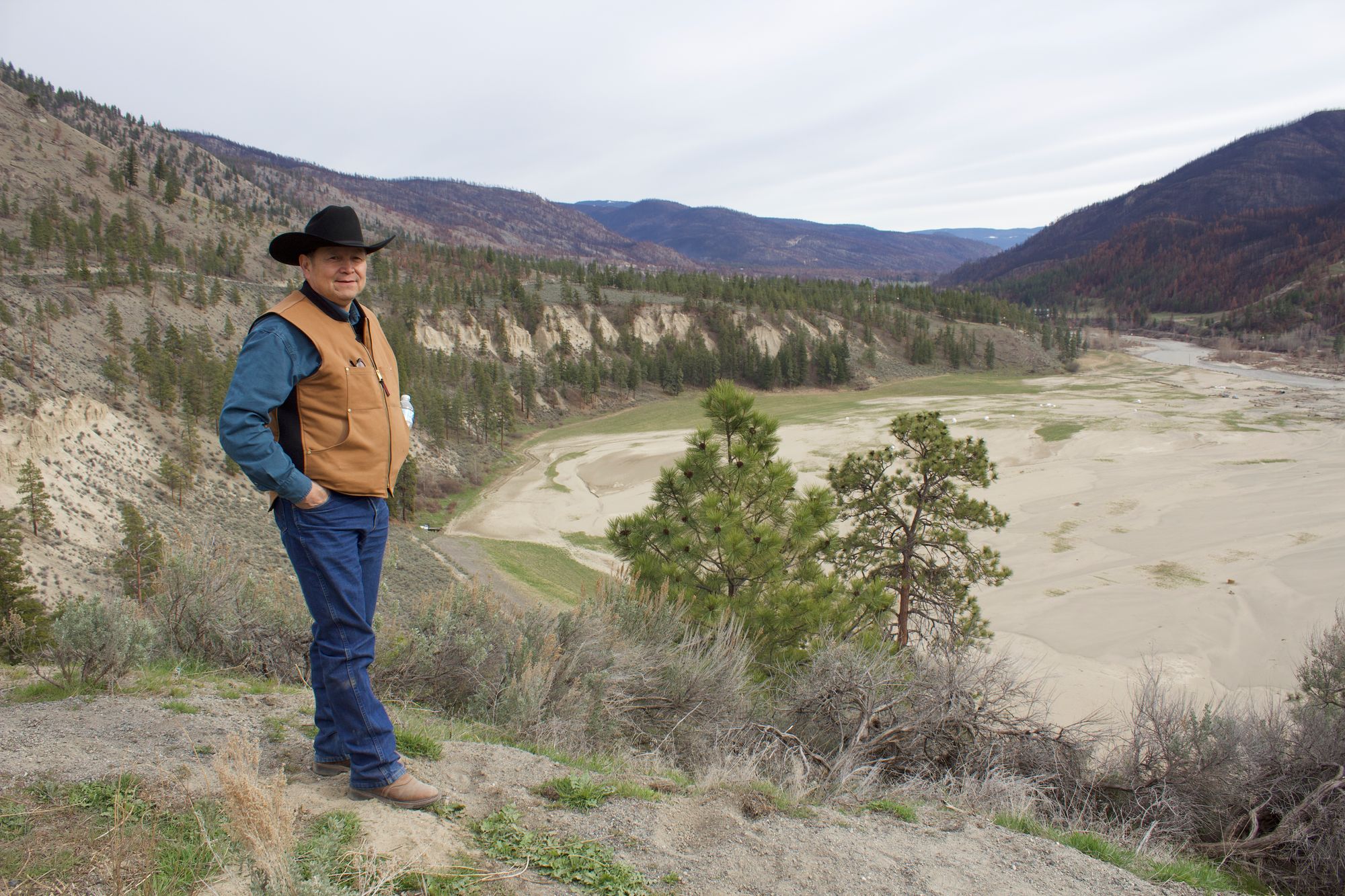
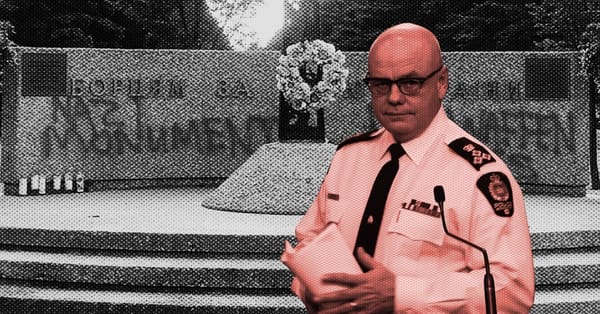
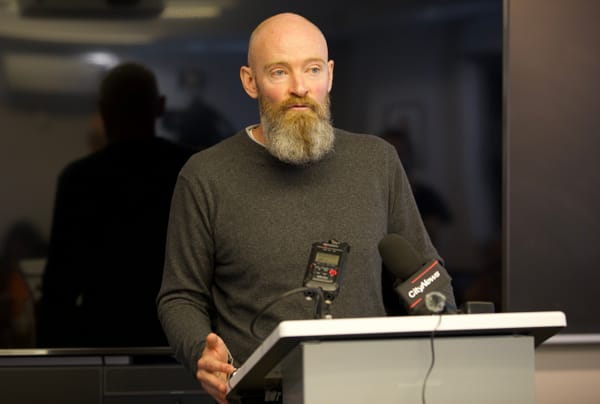

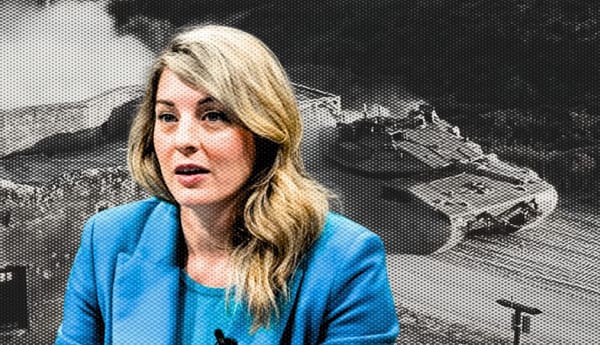
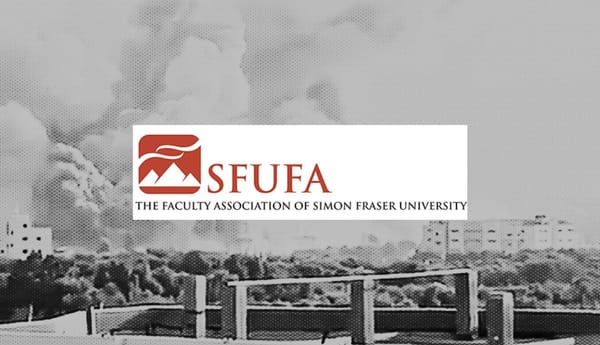
Member discussion